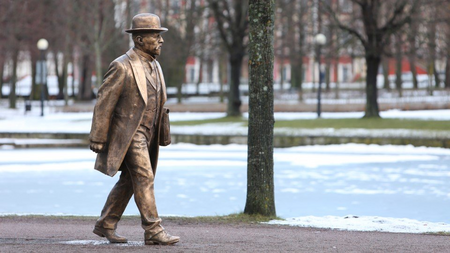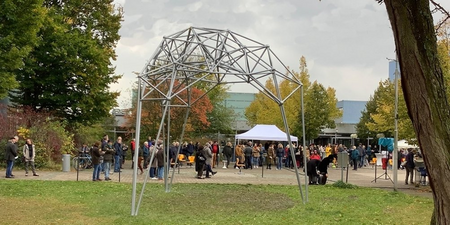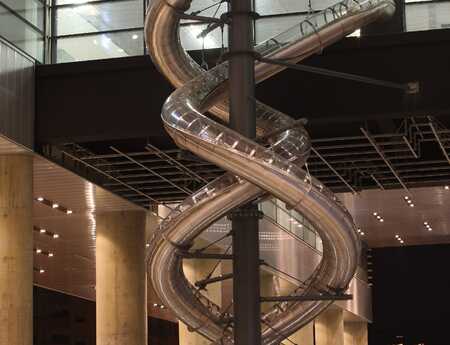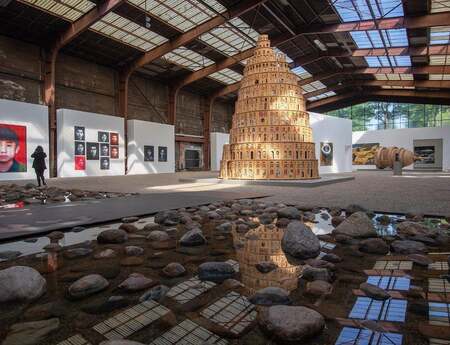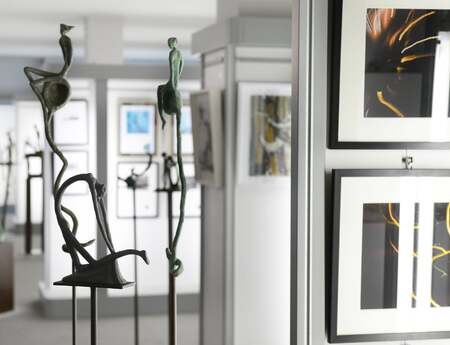The power of memory: monuments as a topic of the Online Club
Monuments are omnipresent in public space. They are important for building identities, they preserve memories and can be charged with tremendous symbolic power. In our last edition of the Online Club, we talked with artists Linda Verkaaik (NL), Michael Zwingmann (DE) and Elo Liiv (EE) about the messages behind their monuments. In the course of the evening, the one or other serious note was struck.
Sculpting Society - sculpture network’s current annual theme leaves a lot of room for interpretation and can be applied to very different concepts and art movements. However, there is one art form that is particularly involved in shaping society: the monument. We have therefore dedicated an entire evening to this topic.
Monuments and national identity are intrinsically linked. Monuments can reveal and sustain a shared history, they can tell a story and provide education, and last but not least, they can bring people together. In the latest edition of sculpture network's online club on 7 March 2022, three artists from different European countries shared their perspectives on the function and meaningfulness of monuments with an extremely interested audience of over thirty people from all over the world. Very different understandings of nationality and identity were heard, as were different artistic approaches, which nevertheless all had one thing in common: These sculptures are meant to reach all people. The current global political situation clearly resonated in the conversations, making it an emotional and moving evening.
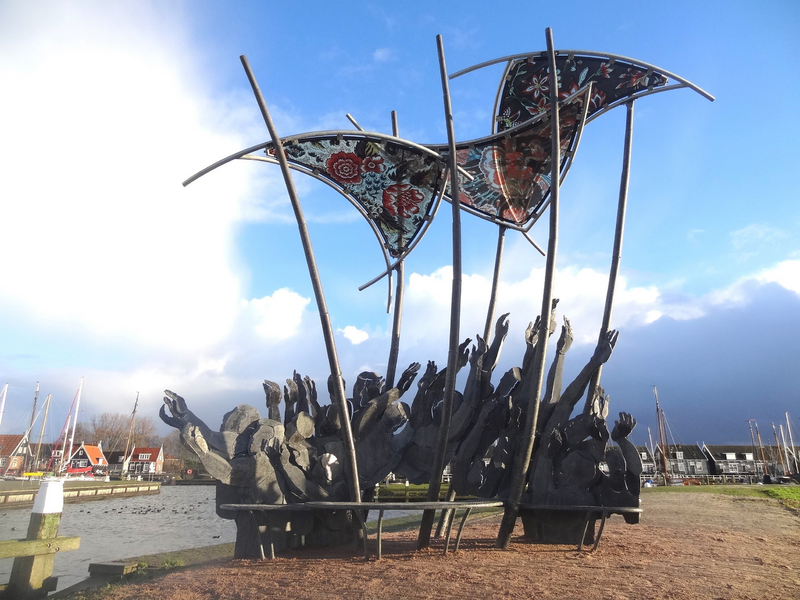
Waves of memory
Linda Verkaaik from the Netherlands kicked off the discussion with her Het Nationale Watersnood Monument, unveiled in 2016 to mark the centenary of the 1916 flood disaster on the island (now peninsula) of Marken. The storm surge claimed sixteen lives and is only one in a long history of many flood disasters the Netherlands have had to deal with in the past and will have to more and more in the future due to climate change. Linda's undulating human ship with its colourful sails impresses with its complexity and intricacy. Nautical and marine references shine through in every detail. Each element of the monument has a powerful symbolic force: the outstretched arms of the people are reminiscent of drowning victims and of hands reaching out to help. Together they form the wave that meant their downfall, and at the same time symbolises their unity; together they form the saving ship, the ark.
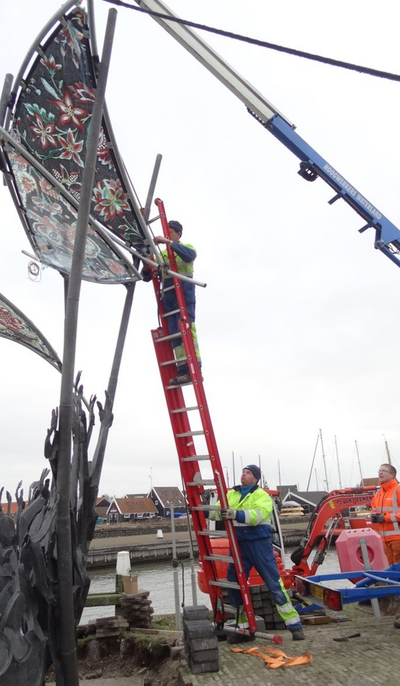
The vessel is carried through the storm by sails made of colourfully printed acrylic, with patterns that correspond to the traditional costumes of the region. In the course of globalisation and ever-growing tourism, these cornerstones of a regional identity are disappearing bit by bit. They are preserved here as a symbol of hope that shines its light out to sea at night like a lighthouse. A bench installed at the foot of the monument invites people to interact with the art work and facilitates the integration of history and memory into people's everyday lives. Yet it was not only the vividness and complexity of the monument, its interaction with the environment and the viewers that left a lasting impression on the audience. The participants of the Online Club where wowed by the work’s elaborate technical realisation. The lively technical talk that ensued brought together a number of interested people who will certainly continue their conversation long after this event.
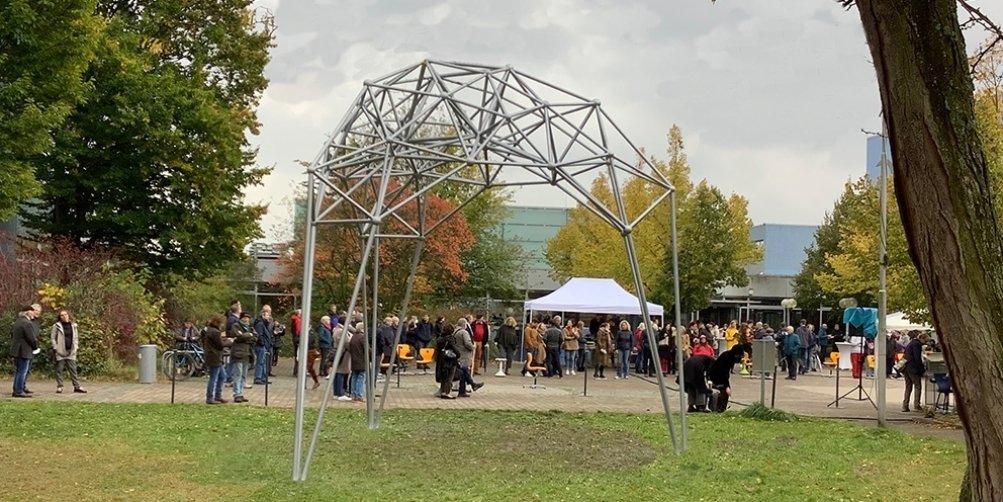
Abstraction of a thought
In the second half of the evening, the focus shifted further west, towards Hanover (DE), where Michael Zwingmann commissioned by the Dr. Elke Reimers Foundation created a monument dedicated to the great German philosopher Hannah Arendt. Where are we when we think is a recent work by the Hanover-based artist and was only unveiled in 2021 in front of the high school Hannah Arendt Gymnasium Barsinghausen. The monument pays tribute to the skills and ideas of the philosopher, who was born in Hanover and gained international fame as an observer of the Eichmann trials and due to her scholarly examination of the Third Reich. In this context, she introduced the influential concept of the "banality of evil" describing the National Socialist regime in Germany, of which she herself, being Jewish, was a victim. Michael’s concept for the sculpture derived from Arendt’s superior intellectual faculties in combination with her Jewish identity: he was guided by the shape of the human brain and its neural network. He worked this idea into the construction of a geodesic dome in whose structure, depending on the perspective, a Star of David can be discerned. His monument is designed as a passage in the public space, as interactive and thus integrated into life’s reality of the generations after Hannah Arendt.
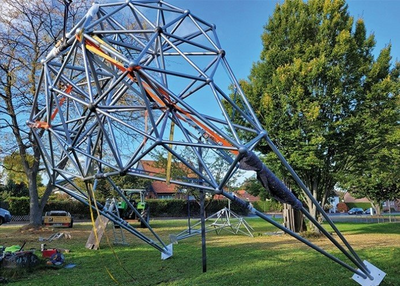
Her ideas remain a living part of society. In addition to the sculpture, QR codes have been placed at ten locations on the school grounds that contain further information about her biography and the memorial. They invite visitors to engage with this important figure of German history and can easily be updated.
Hannah Arendt dedicated her life to coming to terms with the totalitarian regime she had experienced. The topicality of the effects of such a regime was made painfully clear to us that evening by the interjection of a participant who drew our attention to the situation in Russia, especially the artists living there. Many of them are threatened with repression because they speak out against the war in Ukraine.
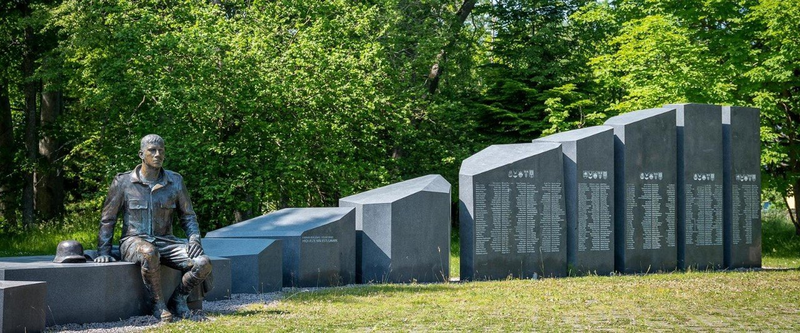
The long road to independence
The Estonian artist Elo Liiv took up this tragic contemporary theme almost seamlessly by describing the history of Estonia's independence. The Baltic country was only able to break away from the Soviet Union in 1991. Pivotal to this development was the peaceful protest of Estonians, who sang for freedom every week between 1987 and 1991. With her description of this so-called Singing Revolution, the artist sent a message of hope to Ukraine and Russia: her fiery plea for a peaceful, united uprising of the people was deeply moving.
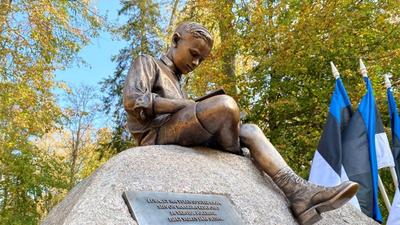
Her sculptures carry the very same message. A country whose monuments, the symbols of its history, were almost completely erased under the Soviet occupation is looking for a new identity, a representation of what it is - and finds it in art. Elo creates realistic monuments of personalities who were essential to the success of the Estonian independence efforts – taking up a very different style compared to many of her other works. She considers her work a contribution to a new representation of Estonian national identity. It’s a self-understanding for which the population has had to put up a hard fight and which must gradually take shape anew in public space.
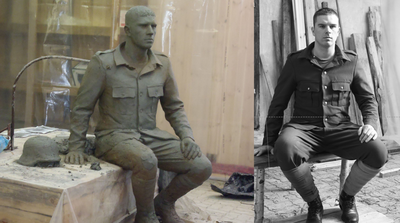
Elo’s works pay tribute to political actors from different eras: Jaan Poska, who led the peace negotiations with Russia after World War I, as well as Kalju Lepik, a poet and freedom fighter of the late 20th century, and last but not least the soldiers who died in World War II. To her, the focus lies on their humanity, on the possibility for the viewer to establish closeness to these historical figures and events. With her monuments she intends to send out a positive message to the world, a message of hope and peace.
At the end of this enriching yet serious evening, this remained the most important message: peace is worth fighting for. And it is worth it to keep memories alive. Monuments can be an important instrument for this goal.
Author: Sophie Fendel, March 2022
Translation: Sophie Kulik
Cover picture: Elo Liiv, Monument of Jaan Poska at park of Tallinn, 2016
